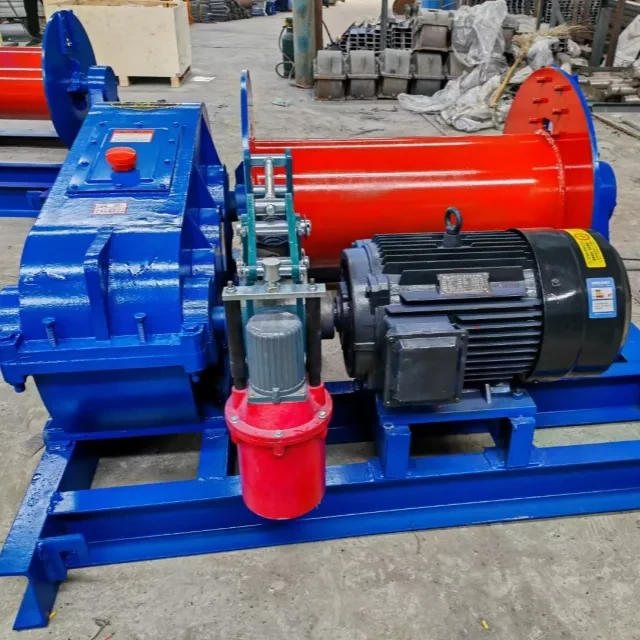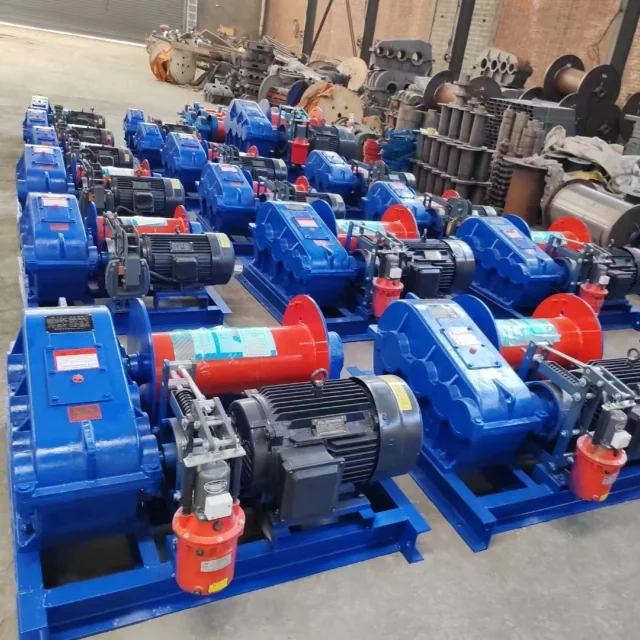Selecting the optimal winch power source isn’t just about raw pulling power—it’s about matching performance, cost, and reliability to your specific application. Whether you’re hauling boats, navigating off-road terrain, or managing heavy construction loads, the wrong choice can lead to inefficiency, safety risks, or even equipment failure. This guide breaks down the pros, cons, and ideal use cases for manual, electric, hydraulic, and pneumatic winches, helping you make an informed decision.
Types of Winch Power Sources
Manual Winches: Simplicity and Reliability
Manual winches are the most basic option, relying on hand cranks or levers to generate torque. Their straightforward design makes them virtually maintenance-free, with no need for external power sources.
Best for:
- Light-duty applications (e.g., small boat trailers, farm equipment)
- Situations where power availability is limited
- Budget-conscious users prioritizing durability over speed
Limitations:
- Labor-intensive for heavy loads
- Slower operation compared to powered alternatives
Ever wondered how manual winches handle extreme loads? Their gear ratios are optimized for torque multiplication, but frequent heavy use can lead to operator fatigue.
Electric Winches: Precision and Convenience
Electric winches dominate modern markets due to their balance of power and user-friendly features. Powered by 12V or 24V systems, they integrate advanced controls for precise load management.
Key Advantages:
- Higher precision: Electronic braking and wireless remotes enhance safety.
- Adaptability: Suitable for off-road vehicles, marine use, and industrial settings.
- Ease of installation: Direct battery connections simplify setup.
Drawbacks:
- Risk of overheating during prolonged use
- Limited submersion tolerance (unless specially sealed)
Did you know? Advanced electric winches use planetary gears to boost torque while maintaining compact sizing—ideal for tight spaces like truck beds or marine decks.
Hydraulic Winches: Power and Endurance
Hydraulic systems excel in heavy-duty scenarios where electric winches might falter. By leveraging a vehicle’s power steering pump or dedicated hydraulic circuit, they deliver unmatched torque and continuous operation.
Why Choose Hydraulic?
- Higher efficiency: No energy loss through heat buildup.
- Submersible operation: Ideal for marine and flood-prone environments.
- Planetary gear mechanisms: Reduce RPM while maximizing pulling force.
Trade-offs:
- Complex installation requiring hydraulic lines
- Higher upfront cost
Hydraulic winches are the unsung heroes of construction sites, where relentless performance trumps convenience.
Pneumatic Winches: Safety in Hazardous Environments
Pneumatic (air-powered) winches are niche but invaluable in explosive or high-moisture settings where sparks from electric motors pose risks.
Unique Benefits:
- Spark-free operation: Critical for oil rigs, chemical plants, or mines.
- Lightweight design: Easier to relocate than hydraulic systems.
Limitations:
- Requires compressed air infrastructure
- Lower torque compared to hydraulic alternatives
Choosing Your Winch Power Source: 3 Critical Factors
1. Load Requirements and Frequency of Use
- Light/occasional loads: Manual or basic electric winches suffice.
- Heavy/continuous use: Hydraulic systems outperform electric models in durability.
2. Environmental Conditions
- Marine/wet environments: Hydraulic or sealed electric winches resist corrosion.
- Off-road/remote sites: Electric winches with dual-battery setups prevent power loss.
3. Industry-Specific Needs
- Construction: Hydraulic winches handle steel beams and concrete barriers.
- Off-roading: Electric winches with synthetic ropes offer portability and speed.
Final Recommendations
- For versatility: Mid-range electric winches strike the best balance for most users.
- For brute strength: Hydraulic systems are unmatched in industrial settings.
- For safety-first zones: Pneumatic winches mitigate explosion risks.
Pro Tip: Always verify your winch’s duty cycle—especially for electric models—to avoid burnout during extended tasks.
By aligning your power source choice with actual demands, you’ll ensure safer, more efficient operations. Whether it’s a Garlway winch for construction or a compact electric model for weekend adventures, the right decision saves time, money, and frustration.
Related Products
- Ready Mixer Machine for Construction Ready Mix Machinery
- Electric and Hydraulic Winch for Heavy Duty Applications
- Portable Concrete Mixer Machine Equipment for Mixing Concrete
- Small Electric Winch 120V and 240V for Compact Applications
- Commercial Construction Mixer Machine for Soil Cement Mixing Concrete
Related Articles
- How to Conduct OSHA-Compliant Concrete Mixer Inspections: A Safety-First Checklist
- How to Classify and Resolve Concrete Mixer Hazards with Compliance
- How Ignoring Concrete Mixer Manuals Endangers Workers and Invites Legal Consequences
- How to Build an OSHA-Compliant Safety System for Concrete Mixer Workspaces
- Optimizing Concrete Mixer Safety: How Proactive Tire and Suspension Maintenance Prevents Catastrophic Failures





















